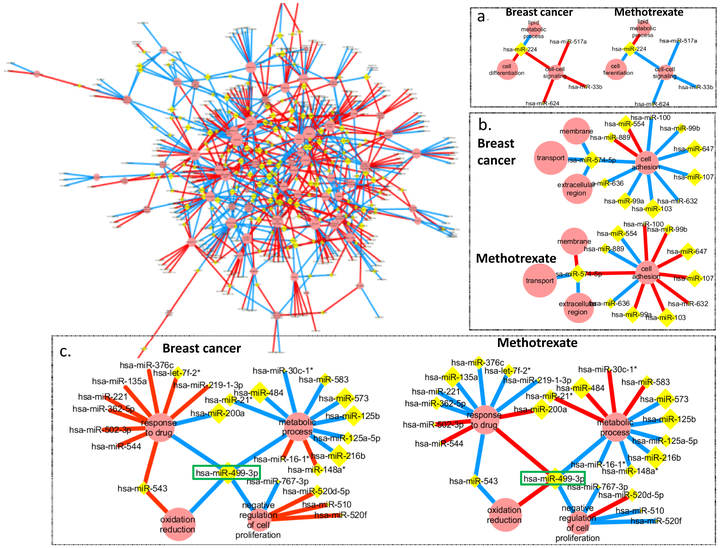Predicting response to preoperative chemotherapy agents by identifying drug action on modeled microRNA regulation networks
 Image credit: Unsplash
Image credit: Unsplash
Abstract
Identifying patients most responsive to specific chemotherapy agents in neoadjuvant settings can help to maximize the benefits of treatment and minimize unnecessary side effects. Metagene approaches that predict response based on gene expression signatures derived from an associative analysis of clinical data can identify chance associations caused by the heterogeneity of a tumor, leading to reproducibility issues in independent validations. In this study, to incorporate information from drug mechanisms of action, we explore the potential of microRNA regulation networks as a new feature space for identifying predictive markers. We introduce a measure we term the CoMi (Context-specific-miRNA-regulation) pattern to represent a descriptive feature of the miRNA regulation network in the transcriptome. We examine whether the modifications to the CoMi pattern on specific biological processes are a useful representation of drug action by predicting the response to neoadjuvant Paclitaxel treatment in breast cancer and show that the drug counteracts the CoMi network dysregulation induced by tumorigenesis. We then generate a quantitative testbed to investigate the ability of the CoMi pattern to distinguish FDA approved breast cancer drugs from other FDA approved drugs not related to breast cancer. We also compare the ability of the CoMi and metagene methods to predict response to neoadjuvant Paclitaxel treatment in clinical cohorts. We find the CoMi method outperforms the metagene method, achieving area under curve (AUC) values of 0.78 and 0.66 respectively. Furthermore, several of the predicted CoMi features highlight the network-based mechanism of drug resistance. Thus, our study suggests that explicitly modeling the drug action using network biology provides a promising approach for predictive marker discovery.